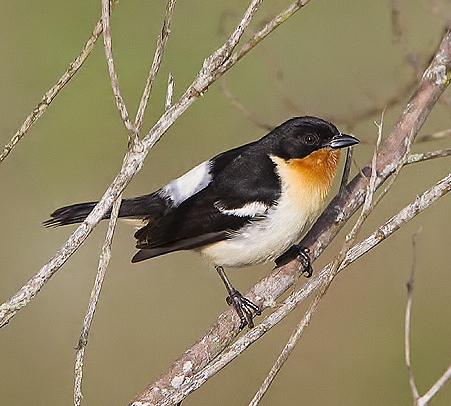 |
| Photo by Ciro Albano (Flickr) |
Commons name:
white-rumped tanager (en); bandoleta (pt); tangara hirundinacé (fr); bandoleta (es); weißbürzeltangare (de)
Taxonomy:
Order Passeriformes
Family Thraupidae
Range:
This South American species is found from eastern Bolivia east to north-eastern Brazil and northern Paraguay.
Size:
These birds are 16-16,5 cm long and weigh 24-34 g.
Habitat:
These birds are found in dry savannas and scrublands, namely in cerrado and campo habitats. They are also found in agricultural areas, and at the edges of human settlements.
Diet:
They are mainly insectivorous, taking caterpillars, grasshoppers, beetles, flying ants, termites and spiders, but will also eat the fruits of Byrsonima, Anonna, Eugenia, and Erythroxulum.
Breeding:
The white-rumped tanager breeds in August-December. They are cooperative breeders, with several helpers, possibly young from previous clutches, participating in nest defence and feeding the chicks. The nest is a tightly woven cup of grass, leaves or twigs, lined with fine plant down. It is placed in a fork in a tree, 1-4 m above the ground. There the female lays 1-4 pale blue eggs with dark spots, which she incubates alone for 15-17 days. The chicks are fed by both parents and the helpers, fledging 11-13 days after hatching.
Conservation:
IUCN status – LC (Least Concern)
This species has a very large breeding range and, although the global population size has not been quantified, the white-rumped tanager is described as fairly common but patchily distributed. The population is suspected to be stable in the absence of evidence for any declines or substantial threats.







